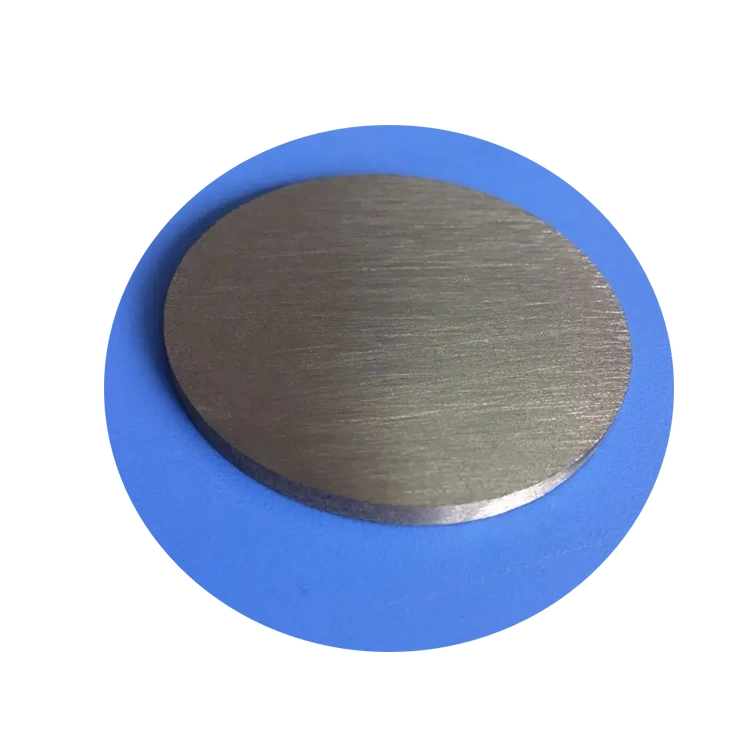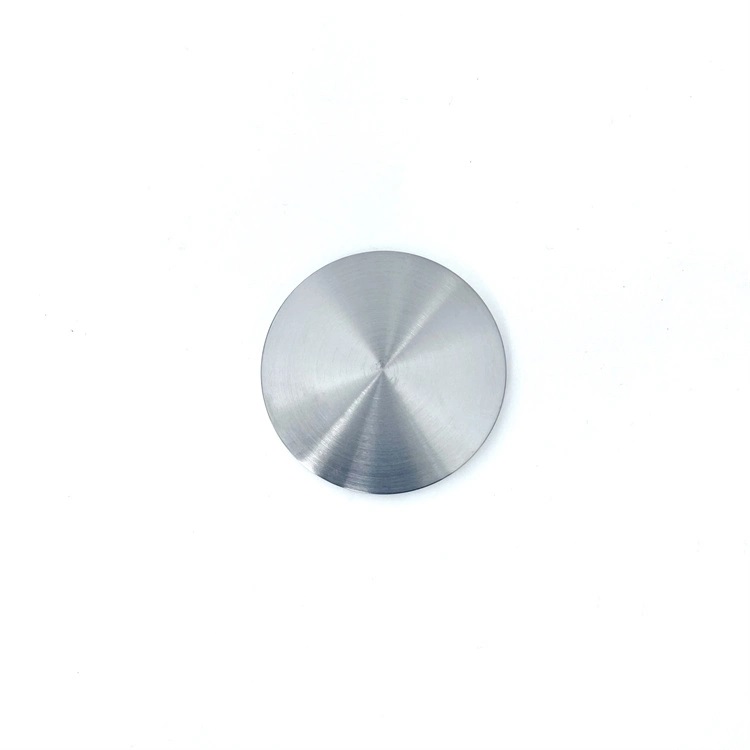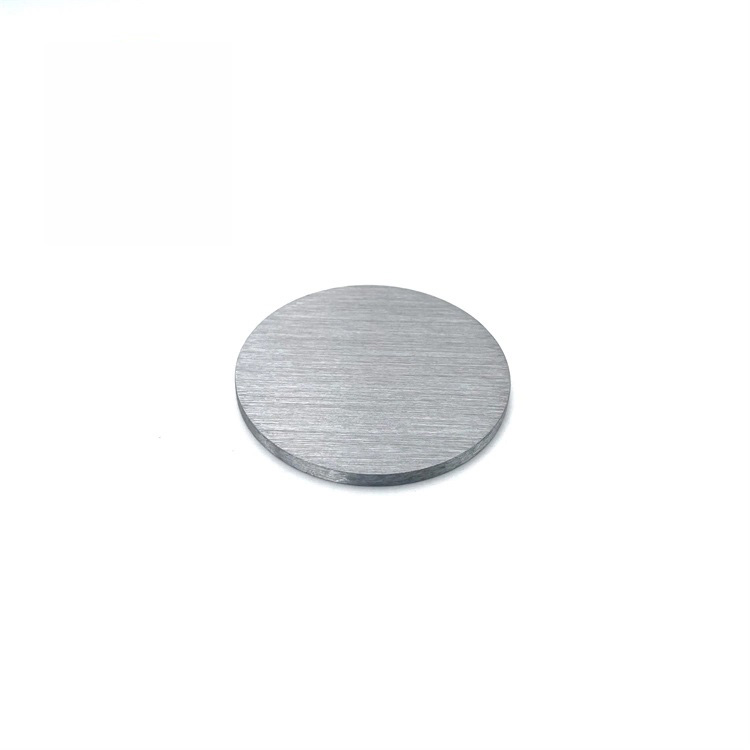Showing 13–24 of 40 results
-


- Material: High-purity Erbium, typically with a purity level of 99.9% (3N) or higher, ensures minimal impurities during the sputtering process.
- Form: Erbium sputtering targets are commonly available in the form of discs, rectangular plates, or custom shapes, depending on specific application requirements.
- Density: The target’s density is critical for achieving consistent deposition rates and high-quality thin films.
- Applications: These targets are used in applications such as optical amplifiers, lasers, telecommunications, and electronic devices.
-


Iron (Fe Ferrum) sputtering targets are essential for industries that rely on the unique magnetic, electrical, and structural properties of iron, making them indispensable in magnetic storage, electronics, industrial coatings, and advanced material applications.
-


- Purity: Typically available at 99.9% or higher purity to ensure optimal film quality and performance.
- Customizable Size and Shape: Gadolinium sputtering targets are available in various forms, such as discs, plates, or cylinders, tailored to specific deposition systems.
- Magnetic Properties: Gadolinium’s strong magnetic characteristics are highly desirable in magnetic thin films.
- Oxidation Resistance: Gadolinium can be coated or alloyed to prevent oxidation during sputtering.
-


- High Purity: Available in high-purity grades to ensure excellent film quality and performance.
- Thermal and Electrical Conductivity: Indium offers great conductivity, making it ideal for electronic and optical applications.
- Malleability: The material can be easily shaped and deposited to meet specific needs.
- Uniform Deposition: Ensures high-quality and uniform films, critical for advanced technologies.
- Corrosion Resistance: Resistant to corrosion, enhancing the durability and longevity of the coatings.
-


- High Purity: Iridium sputtering targets are available in ultra-high purity (up to 99.99%) to ensure the deposition of superior thin films for sensitive electronics and optical components.
- Thermal Stability: Iridium’s high melting point (~2446°C) makes it ideal for thin films that must withstand extreme heat in aerospace, semiconductor, and other high-temperature environments.
- Corrosion Resistance: Iridium is one of the most corrosion-resistant metals, ensuring long-lasting films in harsh chemical environments.
- Electrical Conductivity: Iridium thin films offer excellent electrical conductivity, making them essential for electronic applications requiring efficient current flow.
- Customizable Size and Shape: Available in various forms, including discs, plates, and custom geometries, to fit different PVD systems.
-


Lanthanum sputtering targets are crucial for creating thin films with specific electronic, optical, and catalytic properties, making them valuable in advanced technologies such as semiconductors, optics, superconductors, and energy storage systems. Despite its reactivity, lanthanum’s unique characteristics provide significant advantages in various high-tech industrial and scientific applications.
-


Manganese (Mn) sputtering targets are essential for industries that rely on magnetic properties, wear resistance, and corrosion resistance, making them indispensable in electronics, magnetic storage, metallurgy, and catalytic applications.
-


Molybdenum sputtering targets play a crucial role in industries that require high-performance, heat-resistant, and conductive coatings. Their application in semiconductors, solar cells, flat panel displays, and aerospace components highlights the versatility and importance of molybdenum in modern technology.
-


- High Purity: Available in purities up to 99.95% to ensure superior film quality.
- Excellent Durability: Resistant to thermal and mechanical stress during deposition processes.
- Custom Shapes and Sizes: Adaptable to meet diverse equipment requirements.
- Consistent Performance: Ensures uniform sputtering rates and film deposition.
- Corrosion Resistance: Ideal for harsh environmental conditions.
-


- Purity: High purity (99.9% or higher) is critical to ensure the quality and performance of the deposited film.
- Shape and Size: These targets are available in different shapes, such as discs, plates, and cylinders, with customizable dimensions to fit specific sputtering systems.
- Density and Grain Size: Neodymium targets are manufactured with high density and controlled grain size to improve sputtering efficiency and consistency.
- Magnetic Properties: Neodymium is ferromagnetic, making it ideal for applications requiring magnetic properties.
-


- Thickness: The thickness of the nickel coating can be precisely controlled during the sputtering process, allowing for customized solutions to meet specific application needs.
- Alloys: Nickel sputtering targets can be produced as pure nickel or in alloyed forms, such as nickel-cobalt (Ni-Co) or nickel-chromium (Ni-Cr), depending on the desired properties of the thin film.
- Backing Plates: Nickel targets can be bonded to backing plates made from materials like copper or molybdenum to improve thermal conductivity and mechanical stability during the sputtering process.
-


- Thickness: The thickness of the lead coating can be precisely controlled during the sputtering process, allowing for tailored solutions to meet specific application needs.
- Alloys: Lead sputtering targets can be produced as pure lead or in alloyed forms, such as lead-tin (Pb-Sn) or lead-silver (Pb-Ag), depending on the desired properties of the thin film.
- Backing Plates: Lead targets can be bonded to backing plates made from materials like copper or aluminum to improve thermal conductivity and mechanical stability during the sputtering process.
























